‘A brand is the set of expectations, memories, stories and relationships that, taken together, account for a consumer’s decision to choose one product or service over another.’
— Seth Godin, author and marketer
Does your brand resonate with your target audience and differentiate your business? Is it a story worth telling?
If your brand needs an overhaul, you’ve come to the right corner of the internet. Here’s how to implement a rebrand strategy quickly, effectively and on a tight budget.
This blog is based on one of our popular webinars hosted by Ioana Negulescu, Articulate’s Head of Studio and experienced designer. Watch the video here. Download the slides here.
Everything you need for a successful brand
Where a company's culture defines how the company is perceived internally, a brand defines how it is perceived externally.
Where a company's culture makes people want to work for that company, a brand makes people want to consume its products or services.
In short, a brand is the yin to the yang of company culture. It’s what you tell the outside world about your business.
To break it down further, a brand is made up of:
- Visual assets. Your logo, your website, your marketing materials, your sales presentations, and so on.
- Brand values. What you believe in and what you want others to believe about you. This includes your brand promise and vision, Simon’s Sinek famous ‘Why?’, and your competitive advantage.
- Brand language. How you communicate your messages. This includes your tone of voice, your word choice and overall communication style.
- Brand personality. A set of personality traits that represent who you are as a business and how you are perceived by others. This could include terms such as “approachable” or “trustworthy”.
- Brand experience. The experience you create for your customers during all stages (that is, every step before they make the decision to choose you over your competitors, throughout the sales cycle, and even after the engagement begins).
By implementing a strategy that addresses each of these components, your brand will be consistent, unique and recognisable.
Armed with a strong brand identity, you can go on to form positive, long-lasting relationships with clients and others. Know thyself: that’s what success looks like for this project.
Step 0: Before you get started
What is going to trigger your rebranding project?
Most obviously, if your logo, website and other assets are tired and outdated. If they were last updated several years ago. That could be a red flag.
An inconsistent, or non-existent, visual tone of voice is a glaring sign, too. Meaning, your brand style is hard to pin down, or shifts from platform to platform.
If your logo does not match your website or marketing materials, then that’s also something to watch out for. Disconnection happens when a brand strategy is not applied across the whole piece. More on that later.
Once you’ve established you actually need a rebrand, then you must get the right team on board.
My advice as a design professional is don't do it in-house unless you have a design team. Hiring an external agency means you can turn the tap on or off. A project like this is usually an intense flurry of activity over a few months, so from a resourcing perspective it makes sense to look outside your organisation for that temporary skills boost. Plus, an outsider can provide a fresh pair of eyes. They see what you cannot.
Then, there are the usual questions. Who is involved, what timeline are we talking about, how much can we put towards this? It’s a balancing act. You want a small group of decision-makers, to stay agile. You don’t want to be agonising over this project in six months; it should be over and done with by that point. You want sufficient budget to get the right results and a return on your investment. Ask an expert to advise you on what that means for your business.
A word of warning on budget brand agencies: Yes, you can go to a cheap provider and get a new logo for a hundred bucks. But that logo probably won’t have a strategic purpose. It’s likely to be a hodgepodge of stock imagery. There’s even a risk that you end up mimicking or outright plagiarising an existing logo, because the company hasn’t done their research. Lawsuits are expensive.
On the flip side, watch out for inflated prices, unnecessary extras and hype (as exemplified by the Staples logo reveal).
Step 1: Brand strategy
‘Branding is the process of connecting good strategy with good creativity.’
— Marty Neumeier, author and entrepreneur
Align your marketing strategy and design decisions to get to a brand design blueprint that is tailored to your personas, your goals and your mission. Don't jump into a design without a strong strategic foundation.
With clients, we start this process off with a kick-off call. At this call, we often hear, ”I want something that looks like what they’ve got”. We understand, but remember, you don’t want to be like everybody else. This is your brand. So avoid making the same choices as your competitors. Look at them as part of this initial research phase, but come into this project with an open mindset to create a strategy that’s all your own.
It’s at this stage that we suggest doing a series of workshops around personas, core messaging, tone of voice, mission, vision, purpose and values. We tend to asking things like, “What are your growth aspirations?”, “How do you think your existing customers perceive your brand?” and “Is there anything from the brand heritage that you would like to keep?”
Though, most of the time, the discussion is the work, it’s helpful to document the outcomes for future reference. Each document should cover one area and be about a page or two long. This forms your brand strategy, but it also lays the foundation for content marketing and website redesigns. Everything in marketing starts with strategy.
Budget tip: Sign up for our DIY strategic foundations course. It’s a free set of five lessons, emailed weekly, that will help you organise your workshops.
Step 2: Mood boards and mock-ups
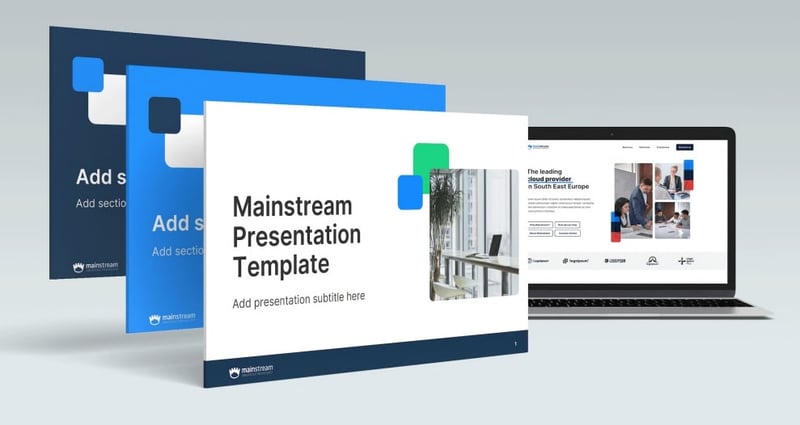 Although a brand encompasses a lot of how your business communicates, we’ll focus on the visual side of things now.
Although a brand encompasses a lot of how your business communicates, we’ll focus on the visual side of things now.
Mood boards help you to compare and contrast styles, based on your preferences. We normally bring clients a few mood boards with different design directions. Each one comes with a clear through-line from the discussions that came beforehand. For example, if you want to be “the bold new voice of Insurtech”, we’d present options with a vibrant colour palette and dynamic imagery.
Once we’ve narrowed down our options, we then move on to creating mock-ups. These are examples of whatever deliverables we established at the start of our engagement with a client. That might be a website rebrand, so we’d produce a homepage design with example modules. It could be a white paper template or a PowerPoint presentation template.
A mock-up demonstrates the brand visualisation in a way that allows stakeholders to make tweaks before a final decision is reached, or before that work is put into action.
Budget tip: Make moodboards yourself by taking screenshots of things that you like and putting them together in one place, such as Pinterest. You could even use a whiteboard, cut-outs/print-outs and blue-tack. Then, if you haven’t been working alongside a designer up to this point (however, we recommend you do so!), you can create a brief for them to work from. Use your mood boards and strategy documents to advise your designer so they can put together mock-ups that you’ll love.
Step 3: Brand book
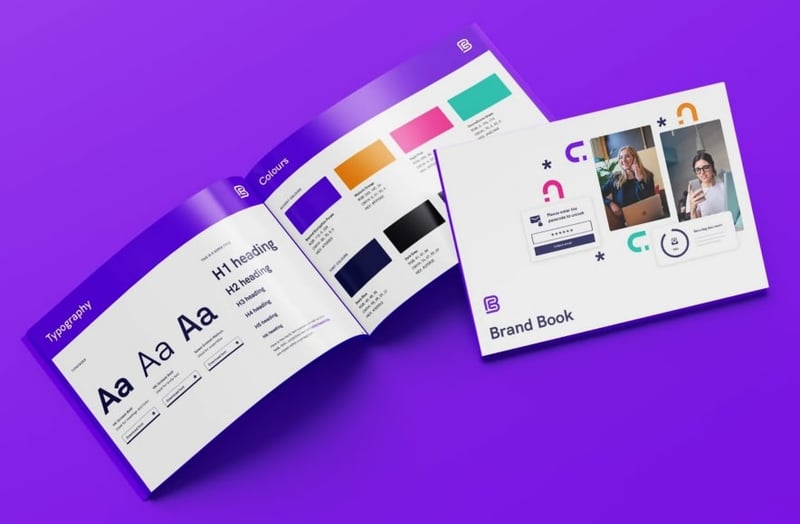 At the end of all of this, you will want to create a brand book. A brand book brings together all the visual assets that define or evolve your existing brand. It helps you maintain a consistent brand, from fonts to imagery to icons.
At the end of all of this, you will want to create a brand book. A brand book brings together all the visual assets that define or evolve your existing brand. It helps you maintain a consistent brand, from fonts to imagery to icons.
Unfortunately, while many businesses have some kind of brand book, only 30 percent enforce it. Sometimes, this is because the brand book is not kept up to date, or due to lack of access. We often see long brand books that are dozens of pages with strict rules that constrain creativity and confuse the average user. The book looks authoritative and may please the CEO, but the reality is it’s over-worked and unusable.
Instead, keep your brand books easy to to use and concise. Use interactive links in the contents page at the beginning to navigate to each section. Include only the most important information. Also, include links to further information or assets as needed, such as logo files, font links, templates and so on. Make it the index for all of those resources. Get different people to review the book, to check they can find everything they need.
Budget tip: Use open source tools. For colour palettes, we suggest Coolers. Google fonts are free, and we always recommend Inter as a safe, default font (we use it a lot!). To find royalty free stock photography try Unsplash or Pexels. FreePik is a great source for illustrations and icons. GIMP is a solid alternative to photo editors like Photoshop.
Example project: Logo rebrand
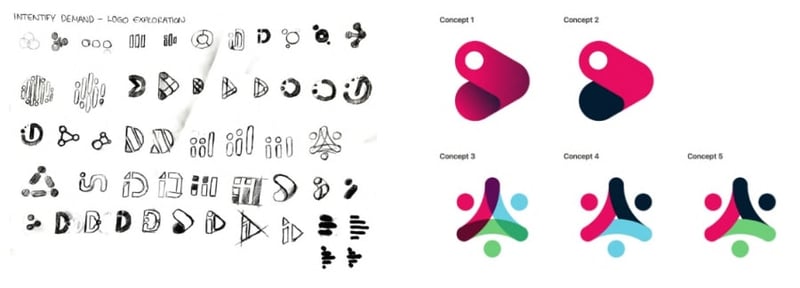 Let’s take a logo rebrand as an example.
Let’s take a logo rebrand as an example.
Here’s the scenario. At Articulate, we tend to think of branding with a website-first approach. In traditional advertising, your logo was the face of your company. In the digital world, your website is. So, we can assume you’ve gone through some strategic workshops and we’re just about ready to launch your site. But. There’s a blocker. Your logo is outdated and doesn’t match your website.
Step 0: Start with the right mindset, a.k.a. this is an MVP (Minimum Viable Product) logo that you can iterate on in the future. Importantly, it’s also going to be an evolution of your existing logo. You’re not starting from scratch. As such, the process should take a few weeks, not months. You need a small team with a designer who is experienced in creating logos in this way.
Step 1: Kick-off the project. Discuss your initial preferences and goals. Look at examples of logos across your industry, and beyond. Do market research. Refer to your strategic foundations and your design blueprints.
Step 2: Brainstorm sketches for the logo mark. Stick to black and white, because every logo should work without any colour. At first, embrace the concept that every idea is a good idea. Then, pick out a few favourites to develop further. Try out different colours. Add typography. Look at it when it’s very very small, and when it’s enlarged to billboard proportions. Consider things like simplicity, legibility, contrast, harmony, colour hierarchy, accessibility and personality.
Step 3: Document your chosen logo in your brand book. Have one version that’s just the logo mark, and one with typography as well. Define size ratios. Decide if the logo changes depending on the background colour. (Always have versions that work on dark or light backgrounds.) Show how the logo should look in situ. Perhaps create some logos for special events, such as for Pride month.
Blue Peter style, here are some logo rebranding projects we did earlier:
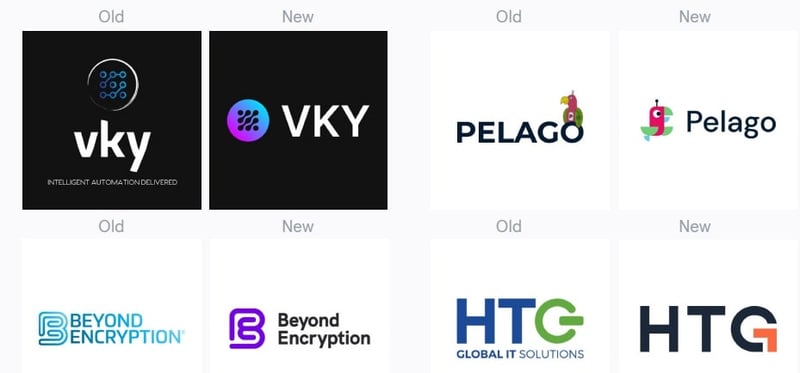
Embrace the evolution
As you can see from that example, rebranding doesn’t have to be this scary, expensive thing. Small changes make a big difference.
To paraphrase Seth Godin, choose to be remarkable, not invisible.
If you’d like to learn more about how we do rebranding for clients, we’d love to open that conversational door. Come into Articulate’s workshop. Check out the Difference Engine. Sample our case studies. Book a guided tour. We’d love to have you.

 Posted by
Ioana Negulescu
Posted by
Ioana Negulescu
-1.jpg?width=1600&height=800&name=art-institute-of-chicago-Xsv93ZK3-6I-unsplash%20(1)-1.jpg)
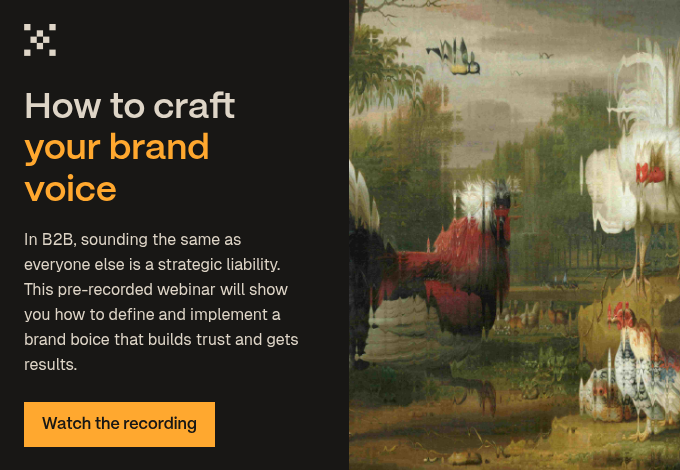
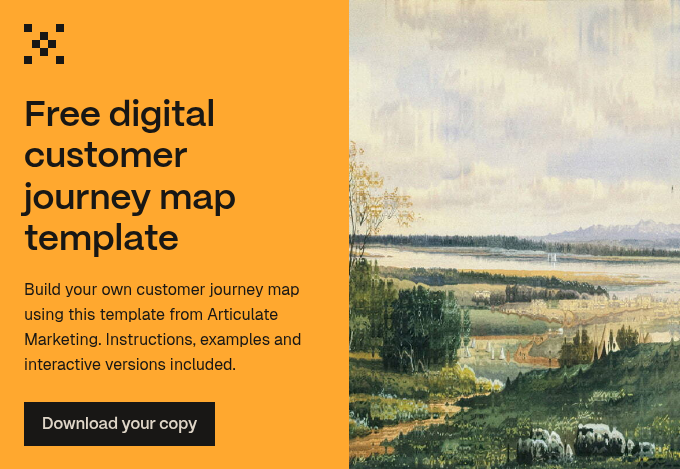
.jpg?width=400&height=250&name=europeana-z_dGJqPPT0M-unsplash%20(1).jpg)

.jpg?width=400&height=250&name=museum-of-new-zealand-te-papa-tongarewa-tQG9yuNiCkc-unsplash%20(1).jpg)